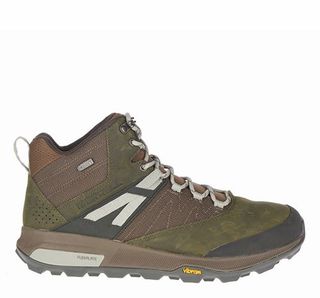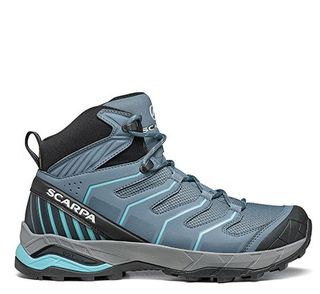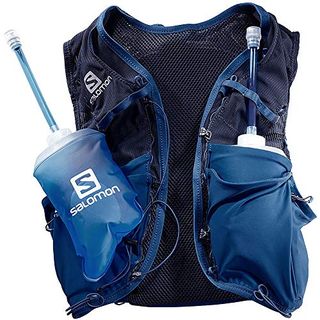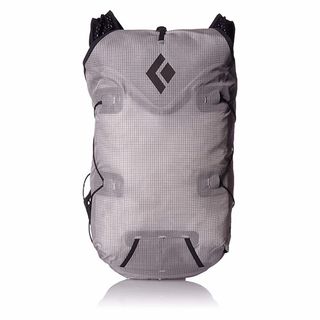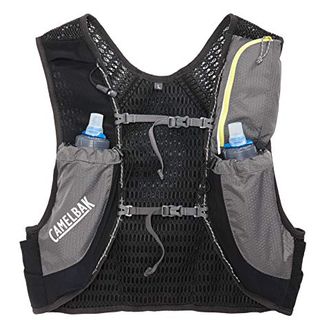When thinking about cross-training for runners, the usual activities that come to mind are cycling, swimming, and some form of strength training, such as weight-lifting or bodyweight exercises. Another great way to round out your exercise routine? Getting out on the trail for a hike.
Not only does hiking present unique and stimulating physical challenges, but also it can relieve stress as you explore new places and get in touch with nature—and your body will appreciate a break from the repetitive movements of running.
“Hiking activates different muscles and is less taxing on the joints than running on pavement,” says Marvin Sandoval, an endurance coach, athlete, and donkey runner based in Leadville, Colorado. “Using secondary muscles for stabilization while hiking can actually aid in injury prevention; for instance, putting your weight on your heels when climbing steep ascents activates the glutes and puts less strain on the calves and Achilles tendons.”
Runners focused on getting in hard workouts might view hiking as more of a leisure activity, but it isn’t always a walk in the park (so to speak). According to pro marathoner Nell Rojas, hiking can be a valuable cross-training exercise, particularly beneficial to ultrarunners who naturally employ it in the uphill portions of their races.
“Power-hiking can get your heart rate up to aerobic or even threshold zones and is a type of strength endurance if it involves a lot of climbing,” she explains. “It’s also great for those who aren’t able to run high mileage due to injury; they get the training benefits without all the pounding.”
Whatever your motivation—whether you’re aiming to mix up your training for a future race or are just looking for a fun and different way to challenge yourself—hiking is a great option for any runner. Here’s how to get started.
This content is imported from {embed-name}. You may be able to find the same content in another format, or you may be able to find more information, at their web site.
Finding Trails
When exploring the best areas for outdoor adventures near you, be sure to do a little research on your route of choice before hitting the trail. Word of mouth is an easy and reliable way to learn about fun local trails. Consult outdoorsy friends who can point you in the right direction (and possibly come along), join online hiking communities, or make a post on social media requesting recommendations for good beginner hiking trails in your area.
Some apps, like AllTrails, will offer a variety of options by displaying known hiking spots near your location. Look over the photos, ratings, and descriptions of each trail so you can make an informed decision. Beginners would be wise to try out those rated as “Easy” before attempting any of the “Moderate” or “Hard” routes.
“Start with hill ranges that are lower in elevation before moving on to higher peaks,” suggests Ben Walker, a personal trainer and conditioning specialist at Anywhere Fitness in Dublin. “Progressions should be made slowly, so consider mapping your destinations in this manner when first starting out as a hiker.”
What to Wear
Once you’ve picked a trail, the next step is to check the weather forecast so you can plan for the length of your hike (cut it short if lightning is in the forecast!) and determine how you’ll gear up.
Similar to running in the cold, layer up if you’re going out in cool temperatures—you can always peel off your jacket as the exercise warms you up—and for warm weather outings, opt for light, breathable apparel that won’t chafe your body as you hustle along the trail. Rojas shares that her hiking wardrobe is not much different from what she wears on a run. “I like short and steep hikes, so I don’t need anything too crazy: I wear Salomon trail running shoes, normal running tops and bottoms, and whatever hat I can find.”
Trail running shoes often feature grippy lugs and rock plates, making them perfectly suitable for casual hikes. However, if the terrain you’ll be tackling is rougher or rockier than you’re used to, a sturdy pair of hiking boots might be a better choice. Try out both types of footwear to learn your preference, always choosing socks with cuffs that go above the shoe collar to prevent blisters.
Staying Fueled and Hydrated
Once again, the protocol for hiking is similar to that of running when it comes to keeping yourself well fueled. Sandoval recommends taking in plenty of calories the same as you would on race day. Hydration habits, on the other hand, might vary according to the weather and elevation. “When you get higher in elevation, you should drink more,” he says. “Try to aim for about 20 ounces of water an hour; it’s easy to forget about drinking enough while you’re hiking.”
Wearing a hydration pack with the drinking hose hovering readily at your shoulder is a perfect way to keep sipping on the go, and it can serve the dual purpose of holding your snacks. Trail mix, gels, fruit gummies, and protein bars are easily packable and good sources of calories for when your energy dips.
Staying Safe on the Trail
Hiking presents different challenges in a less predictable environment than some runners are used to, so take the right precautions to stay safe. Before setting out, make sure to:
- Tell someone where you are going, or bring a friend
- Check the weather forecast to avoid getting caught in a storm
- Choose a route that suits your abilities, study the map, and follow the signs
- Bring sufficient water and food
- Pack a first aid kit
If you’re concerned about wildlife, do a bit of research on the animals you might encounter on the trail you’re hiking. Sandoval’s advice? Carry a whistle, and don’t tread too lightly as you go. “Wildlife isn’t out there to get us. Try to make noise as you’re hiking—don’t be intentionally quiet.”
And, in the interest of injury prevention, save the challenging hiking excursions for when you haven’t performed long-distance running or heavy training sessions within the past 48 hours. It’s better to rest or do low-key hikes when your body is repairing itself from an intense workout.
“I don’t hike when I’m training for a big race because my legs are maxed out with a pretty strict training plan as it is,” says Rojas. “But I love hiking during the offseason. It gives me a chance to slow down and enjoy the outdoors that I usually speed by.”
This content is created and maintained by a third party, and imported onto this page to help users provide their email addresses. You may be able to find more information about this and similar content at piano.io

